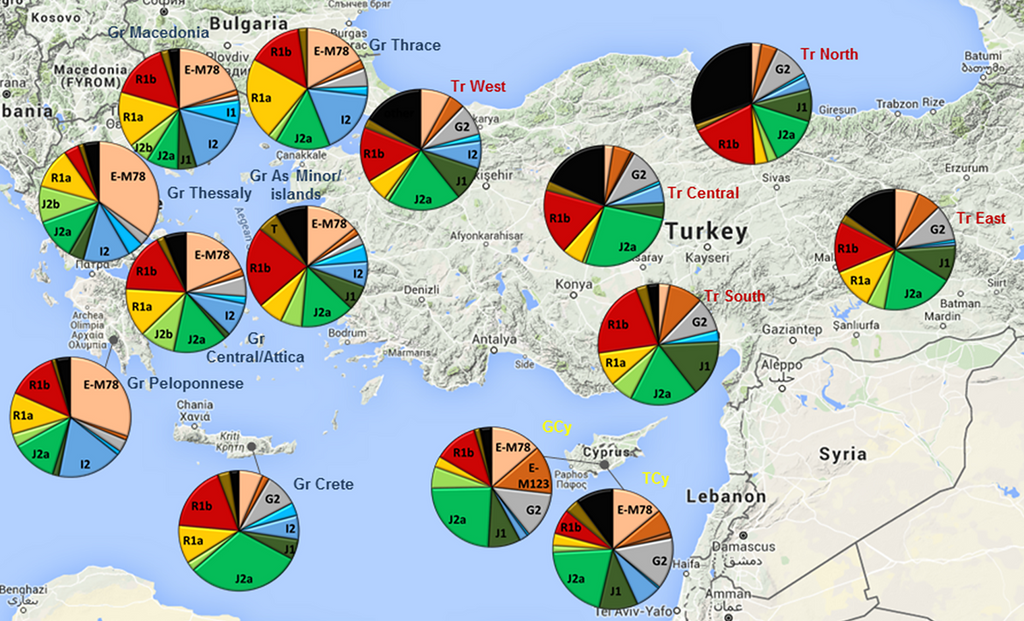
ome of the percentages identified were:[5]
J2=24% - J2 (M172)[5] Typical of North African, West Asian, Southern European, Caucasian, South Asian and Central Asian populations.[20]
R1b=15.9%[5] Widespread in western Eurasia, with distinct "West Asian", "North West European" and "Balkan" lineages.
G=10.9%[5] – Typical of people from the Caucasus and to a lesser extent Europe, the Near East and Central Asia.
E3b-M35=10.7%[5] (E3b1-M78 and E3b3-M123 accounting for all E representatives in the sample, besides a single E3b2-M81 chromosome). E-M78 occurs commonly along a line from the Horn of Africa, via Egypt to the Balkans.[21] Haplogroup E-M123 is found in both Africa and Eurasia.
J1=9%[5] – Typical among people from the Middle East, Caucasus (e.g. Dagestan) and North Africa; rates in Turkey range from 3% (around Konya) to 12% (in Kurds).
R1a=6.9%[5] – Common in Central Asian, South Asian, and Eastern European populations.
I=5.3%[5] – Common in the Balkans; possibly representing a back-migration to Anatolia.
K=4.5%[5] – Possibly untested subclades of South West Asian subclades like haplogroup L (a.k.a. K1a) or T (a.k.a. K1b) – see below for positive identifications. Or possibly members of rare haplogroups K2a1, found only in South Asia, or P1 (a.k.a. K2b2), found mostly in Central Asia. (Basal clades like K*, K2* and K2b* are now virtually restricted to Oceania and South-East Asia.)
L=4.2%[5] – Now typical of South Asian populations; also found at high levels in parts of Central Asia, the Middle East and the Caucasus.
N=3.8%[5] – Predominant among Uralic language-speaking populations and in Siberia.
T=2.5%[5] – Common in coastal areas from South Asia to Arabia and North East Africa.
Q=1.9%[5] – Common in Siberian and Native American populations.
C=1.3%[5] – Typical of East Asian and Central Asian populations.
R2=0.96% [5] – Common in South Asian populations along with moderate frequencies among Central Asian and Caucasus populations.
This post has been edited by გუბაზიანი on 12 Feb 2019, 23:26


